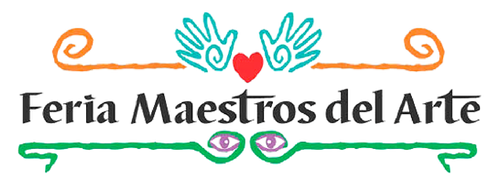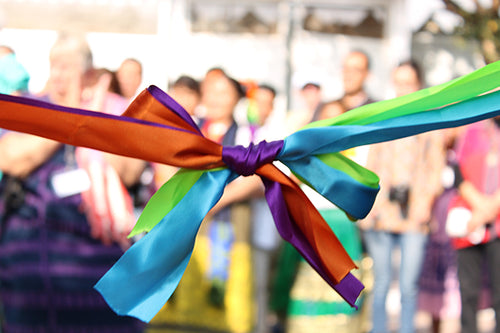
Elena Felipe Felix & Bernardina Rivera, Huancito Michoacán
Elena Felipe Felix and Bernardina Rivera are indigenous artisans living in the state of Michoacán. They speak the native language, Purápecha (or Tarasco) and inherited their art from their parents. Now they pass their inheritance to their children.
The artistic vocation of their village, as happened in many other towns in the region, is attributed to the early influence of Don Vasco de Quiroga, a 16th century humanitarian bishop who reunited and stabilized the Tarascan people after the devastation of the Conquest. Taking into account the skills and traditions of each village, he assigned to each one the most appropriate craftsmanship for them to dedicate themselves to.
Quiroga introduced the potter's wheel, and invited the indigenous people to make cantaros since the scarcity of water in the area was ideal for transporting and storing the liquid. The elaboration of cantaros in this region has evolved into the creation of tall towers that allow a large amount of water to be stored in a small space inside the home. They are exquisitely decorated with fine details of flowers, hummingbirds and butterflies.
The natives of Elena's and Bernardina's villages were assigned the manufacture of ollas (round pots), which are ideal for carrying and storing water in this semi-arid region. The result over the years has been the elaboration of tall, beautifully decorated mounds of pots that allow a large amount of water to be stored in a small area within each home.
They obtain the clay from communal land deposits. The clay is dug with picks, shovels, machetes and other implements, then buckets or sacks of clay are filled and taken home.
The clay is dried in two or three días and then crushed with heavy stones. All the debris is thrown away and then the dried clay is ground in a mortar and pestle and sifted until it is a fine powder. The clay is moistened and sealed in plastic. The next day, it is kneaded on a makeshift table.
The process is slow as care must be taken to remove all lumps and air bubbles because the pieces can crack. The next step is the molding of the piece. The clay is kneaded and balls are formed and then flattened like "pancakes". The table is covered with fine clay dust to prevent the kneaded clay from sticking.
Once the "pancake" is ready, it is applied to the mold and smoothed and set in place with a damp cloth. A fine thread is used to cut off the excess from the mold. Pitchers and pots are formed with two molds, later the two pieces are joined together to complete the piece.
Once the pieces are removed from the molds, they are placed in the shade to catch their color and dry completely . They are then polished with a pyrite stone and then polished again with a cloth and the decoration follows. Fine cat hair brushes are used to apply the paints that are prepared from clay and water.
Elena and Bernardina mold their pots from carefully prepared clay and coat them with a brown earth pigment that produces great luster when polished. The shiny surfaces are then exquisitely decorated with flowers, hummingbirds and butterflies, using clay paints applied with delicate brushes made of cat hair.
On three occasions Elena and Bernardina have received first prize in competitions in the state of Michoacán. They have also been awarded a National Prize for their olla towers and the Fomento Banamex Cultural Prize. The work of these two women is traditional Mexican craftsmanship at its finest. They are Mexican folk art at its best and are represented in the book "Great Masters of Mexican Folk Art".
Pascual Orozco 6
Huancito, 59792
Elena’s daughter’s 351 160 0528 WhatsApp
Bernardina Rivera
351 102 1485 WhatsApp

